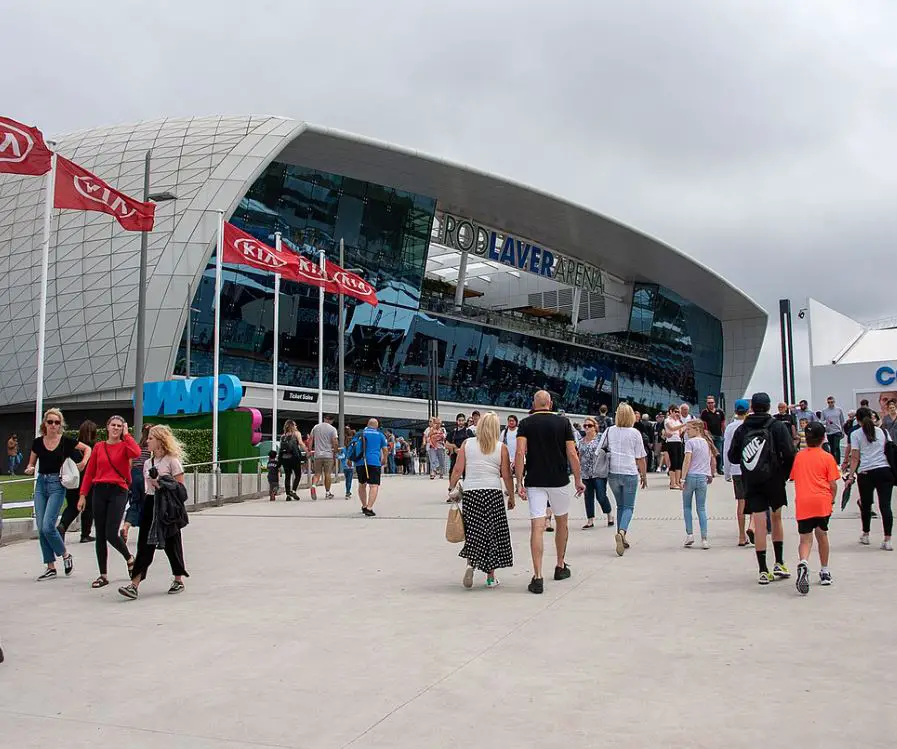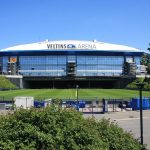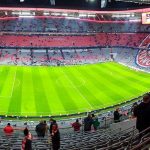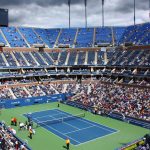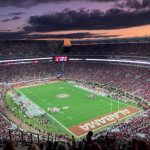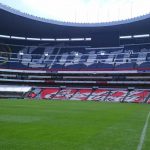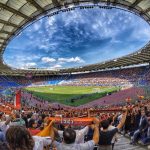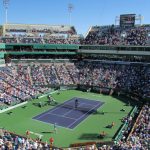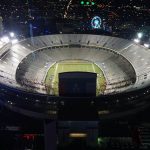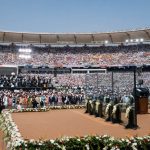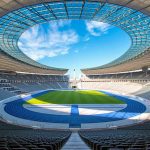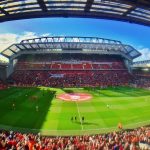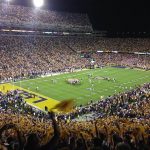The heart of every tennis fan starts beating a little bit faster when hearing the name Melbourne, and this usually happens at the beginning of the year.
That’s because the second-most populous city in Australia is the venue of the Australian Open, the first of the four Grand Slam Tournaments every year.
It kicks off halfway through January and ends during one of the most exciting times in the country, the Australia Day Holiday at the end of the month.
The finals are played in the of the largest tennis stadiums in the world, and arguably one of the most beautiful ones as well.
Let’s take a closer look at some of the most interesting facts about the Rod Laver Arena, one of the most enjoyable places to watch a game of tennis.
1. It’s part of the huge Melbourne Sports and Entertainment Precinct
The Rod Laver Arena can be found in the magnificent Melbourne Sports and Entertainment Precinct, about 3 kilometers east of the center of the city.
It’s the centerpiece of Melbourne Park, the venue of the Australian Open for several decades, and is surrounded by multiple other huge arenas, some of which are some of the biggest stadiums in Australia.
This park is closest to the Yarra River and features several other tennis stadiums that are used during this tournament, including:
- John Cain Arena (10,200 seats)
- Margaret Court Arena (7,500 seats)
- Show Court Area (5,000 seats)
There are two more parks in this stadium, Olympic Park and Yarra Park, and Melbourne Cricket Ground seats 100,024 spectators.
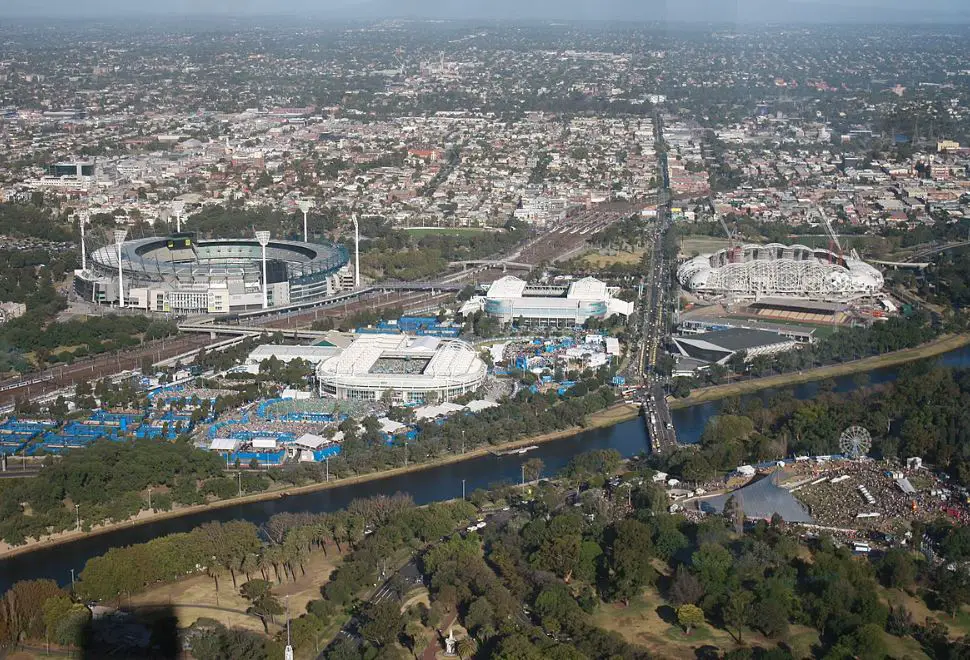
2. It replaced a stadium that was constructed in the 1920s
The Australian Open was established in 1905 but it wasn’t called this back then. It started as the “Australasian Championships,” a name it held until 1927.
This was the year that the name was changed to the “Australian Championships” before being changed to Australian Open in 1969.
The first Australian Championships were held in 1927 and were played in a newly constructed stadium called “Kooyong Stadium.”
This is a reference to the Kooyong suburb of Melbourne which is located just a bit further east of the city center than Melbourne Park.
Today, this arena can only seat 5,000 spectators but this could be expanded to 15,000 during important games.
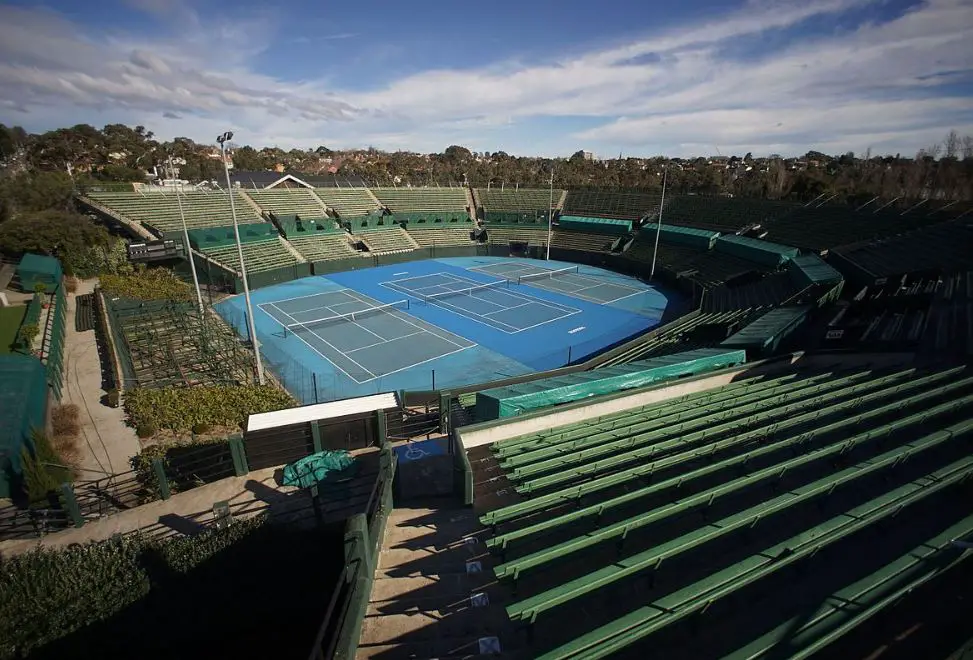
3. The first tournament that took place in the area was the 1988 Australian Open
The Rod Laver Arena replaced the outdated Kooyong Stadium when it was completed between 1985 and 1987. The 1988 Australian Open was the first major tournament that was held here.
It was an expensive endeavor with a price tag of A$94 million, the equivalent of well over $281 million today with inflation in mind.
The arena wasn’t only a serious improvement from the earlier venue of the Australian Open but also became the first tennis stadium in the world to have a retractable roof.
With over 1.5 million visitors every year, the huge price tag to build this arena was well worth it.
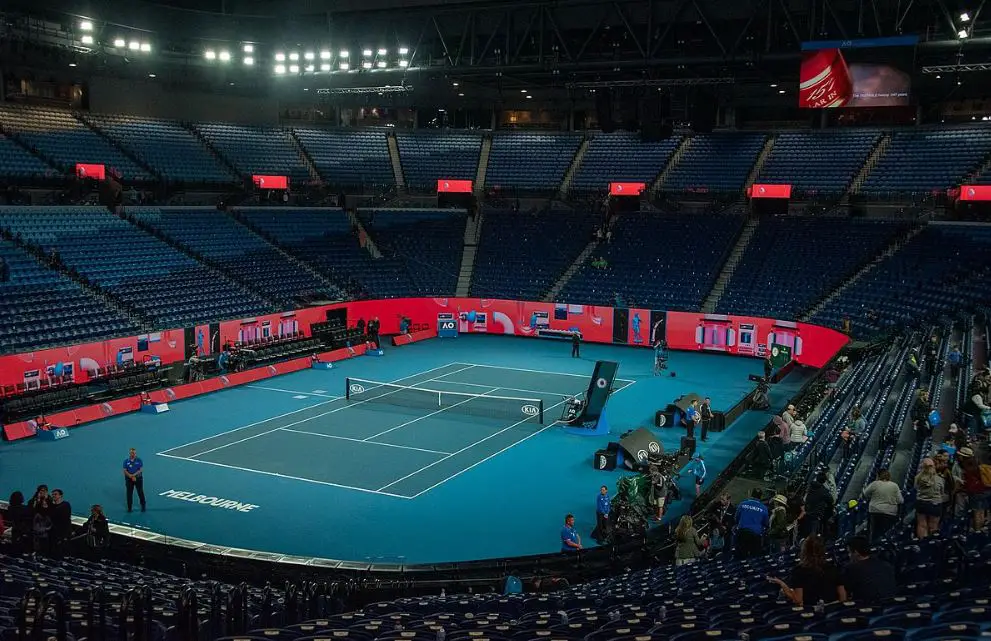
4. Why is it called the Rod Laver Arena?
The arena wasn’t referred to by its current name when it was completed in the late 1980s. Back then, it was known as the “National Tennis Centre at Flinders Park.”
It was renamed in 1996 and called “Centre Court” before it was renamed once again to Rod Laver Arena in 2000.
Today, the magnificent arena in Melbourne is named in honor of Rod Laver (born in 1938), one of the greatest Australian tennis players in history.
He won 200 singles titles, the most in tennis history, including 3 Australian Open titles. The surface didn’t really matter to him as he won tournaments on all surfaces he played on, including grass, clay, hard, carpet, and even wood.
It’s fair to conclude that Rod Laver can be referred to as one of the greatest tennis players in history.
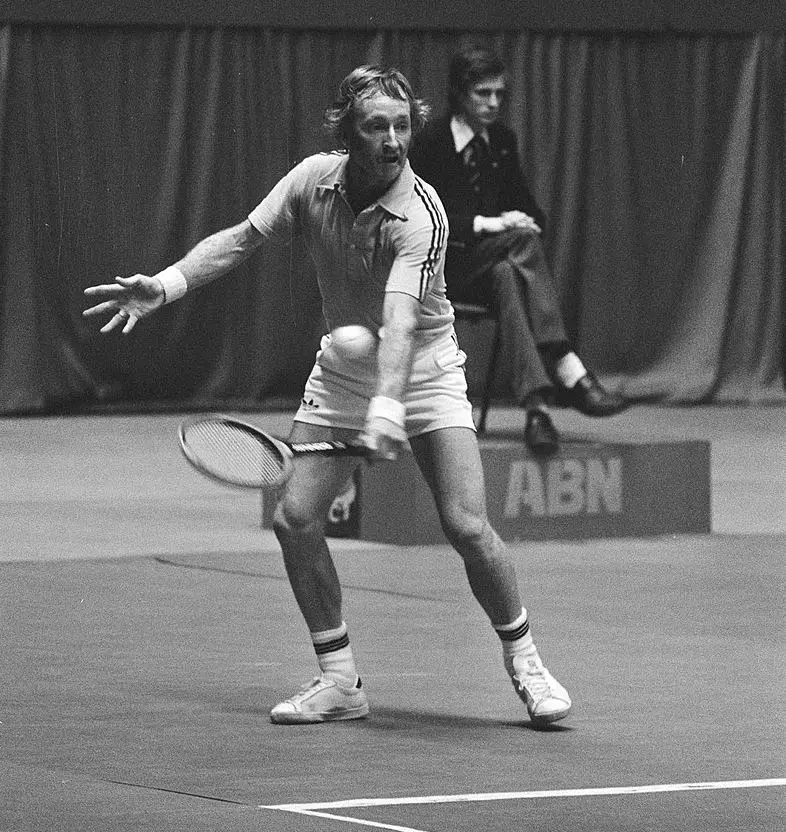
5. The tennis surface of the arena changed from green to blue in the year 2008
If you have been following tennis for a while, then you probably remember that the Australian Open used to be played on a green playing surface.
This was the case between 1988 and 2007 after which the tennis surface was changed to blue. This wasn’t merely a decorative change but a practical one.
The original hardcourt surface was known as “Rebound Ace” and although this is pretty solid, it caused serious issues during hot weather.
It became sticky and many players suffered from injuries on very hot days, which is possible in Melbourne in January because it’s Summer at the time Down Under.
Today, the arena is equipped with “DecoTurf,” the same surface that is used at the US Open and therefore the Arthur Ashe Stadium, the largest tennis stadium in the world.
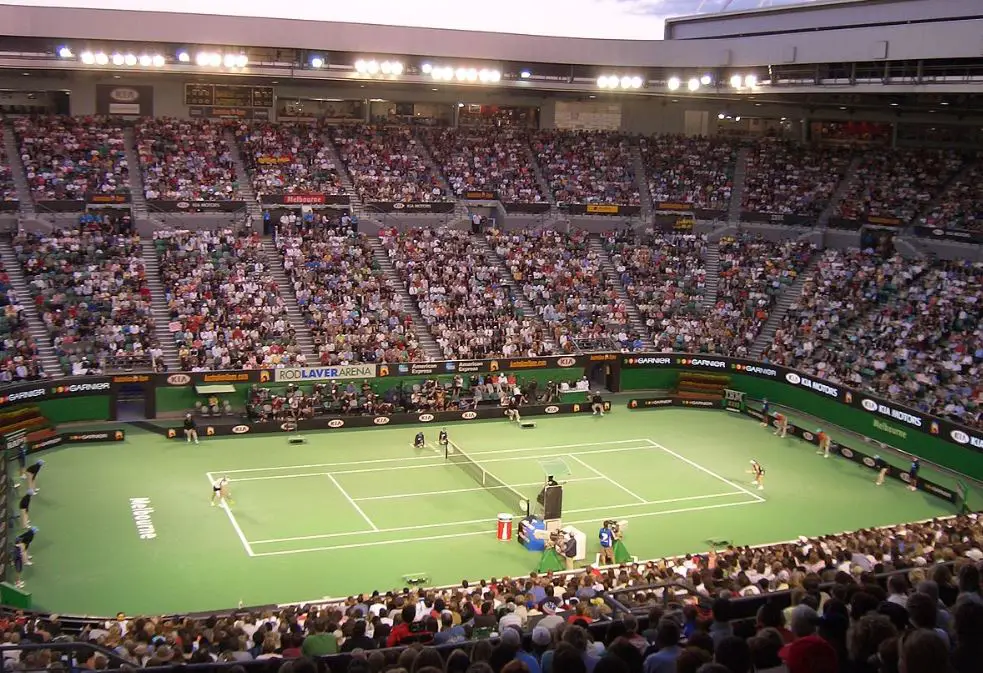
6. The arena is used for a wide variety of other events besides tennis games
The Rod Laver Arena is the epitome of a multi-purpose arena. Because its roof can be retracted, it can be used the same way as any other indoor arena.
Apart from tennis games, the arena has hosted basketball games, motorbike super-crosses, all sorts of concerts, conferences, World Wrestling Entertainment events, and even ballet performances.
The southern lower seating section can be retracted so a stage can be installed here for music concerts.
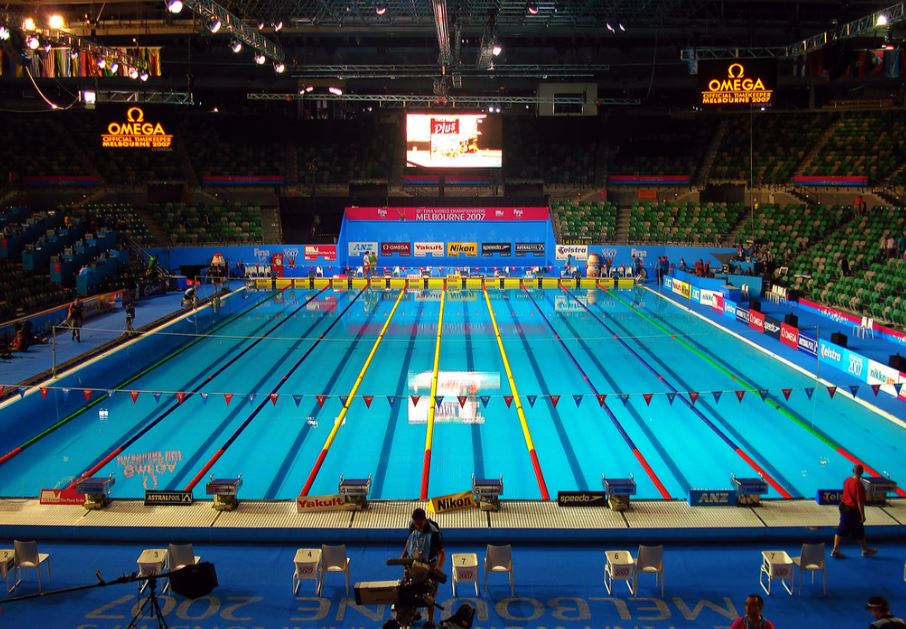
7. It’s the 7th-largest tennis stadium in the world by capacity
Despite being the center court of one of the most prestigious tennis tournaments in the world, it’s not one of the top 5 biggest tennis stadiums on the planet.
The arena features 14,800 seats during tennis games which makes it the 7th-biggest tennis stadium in the world.
This number can be expanded to 15,400 for basketball games and over 16,000 when floor seats are installed during concerts.
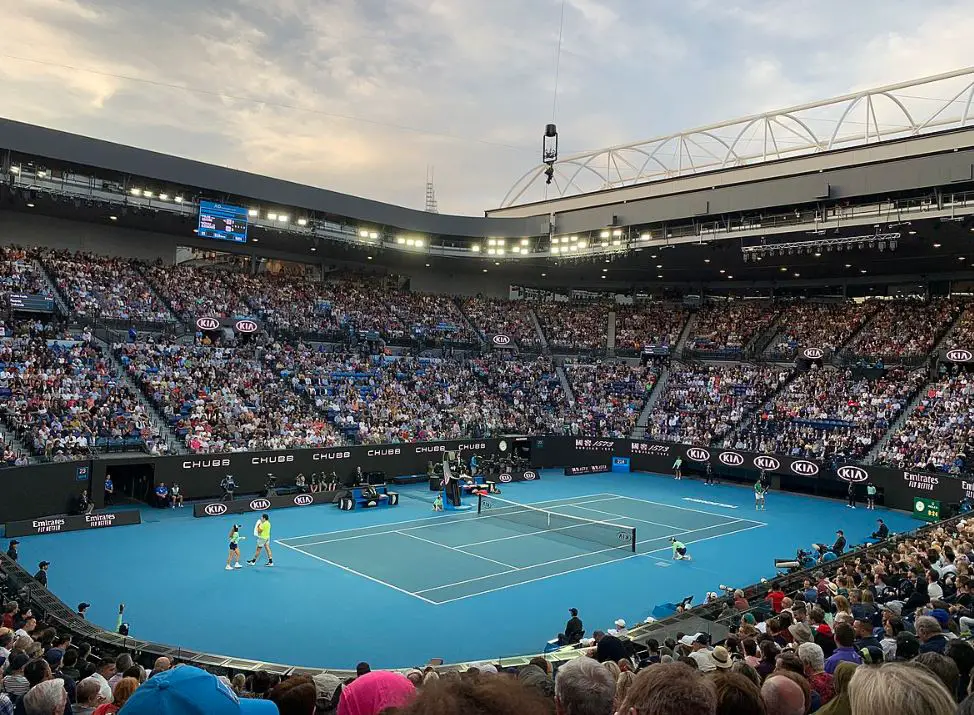
8. The exterior was completely renovated during a costly project in 2018
A major announcement was made in June 2015 which revolved around the redevelopment of Melbourne Park with a budget of $338 million.
A substantial amount of hits money was spent on the Rod Laver arena. The most prominent change was the exterior of the arena and the primary entrance of the venue on the eastern side.
The project was completed in 2018 and the result was pretty amazing!
